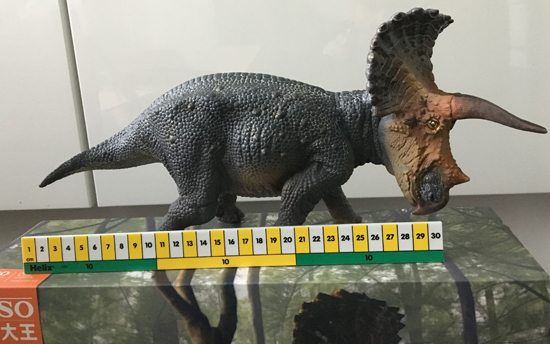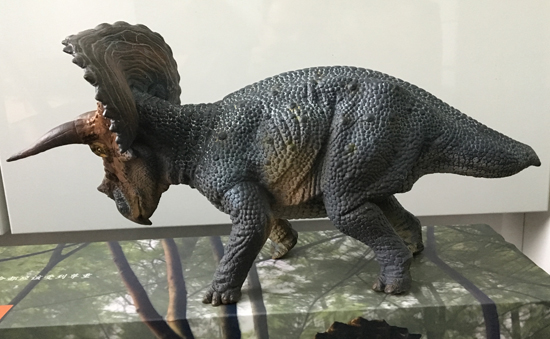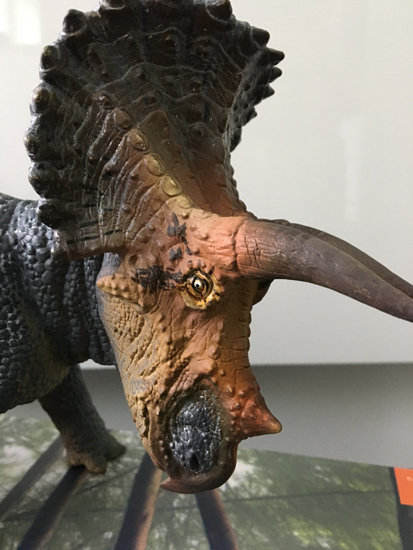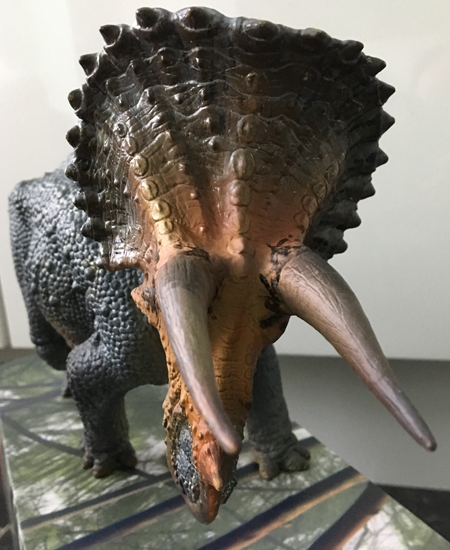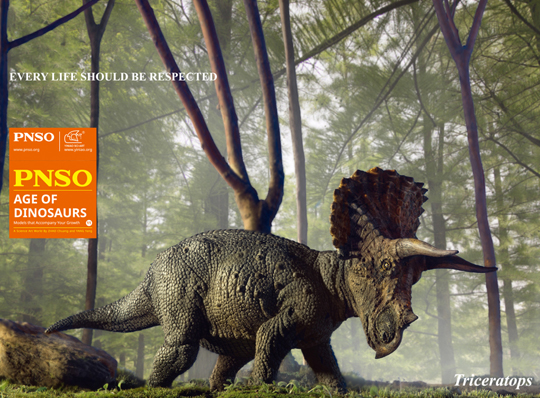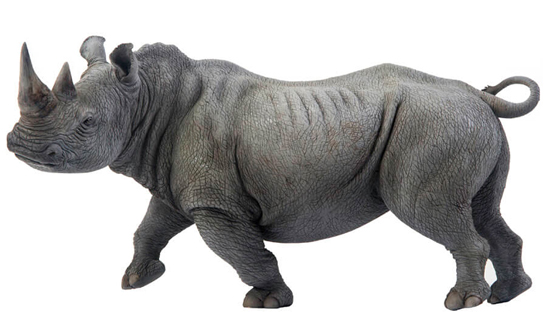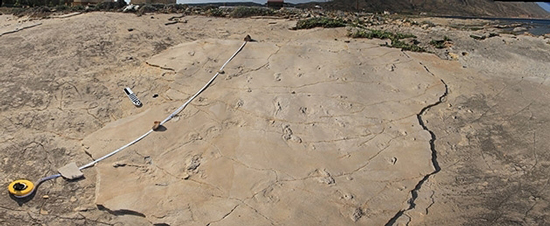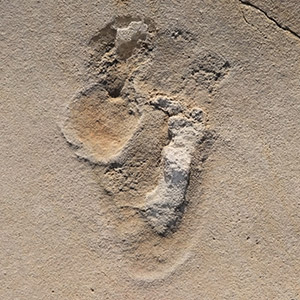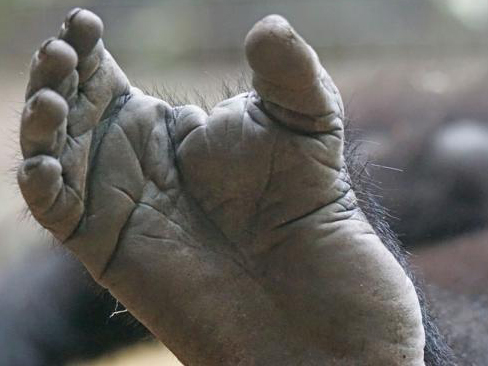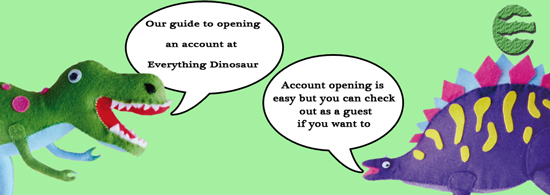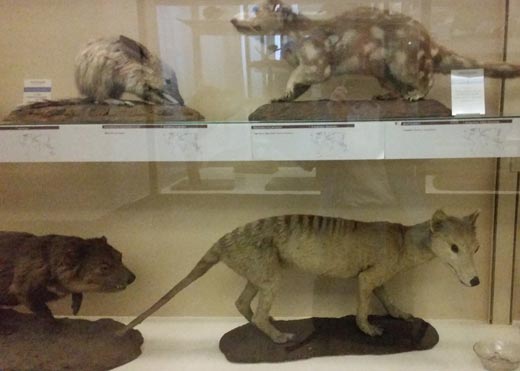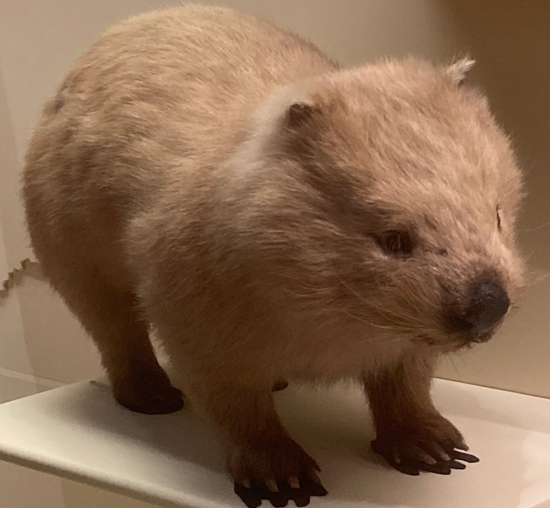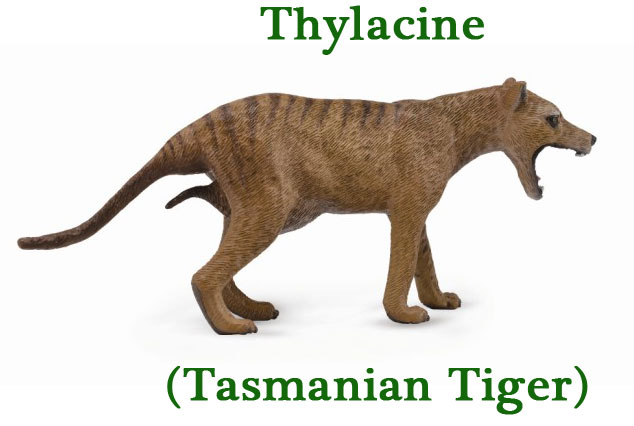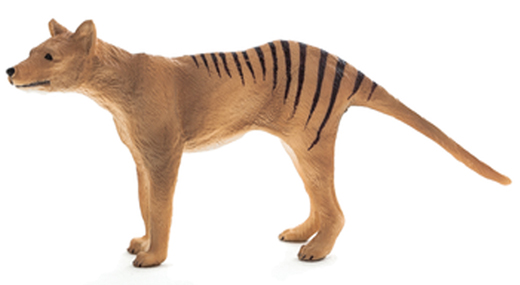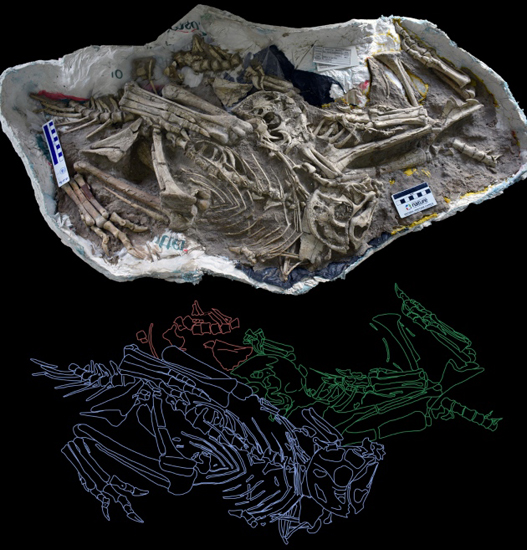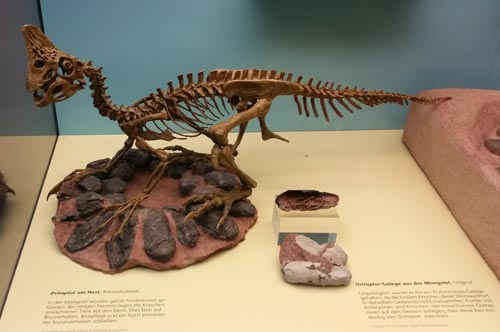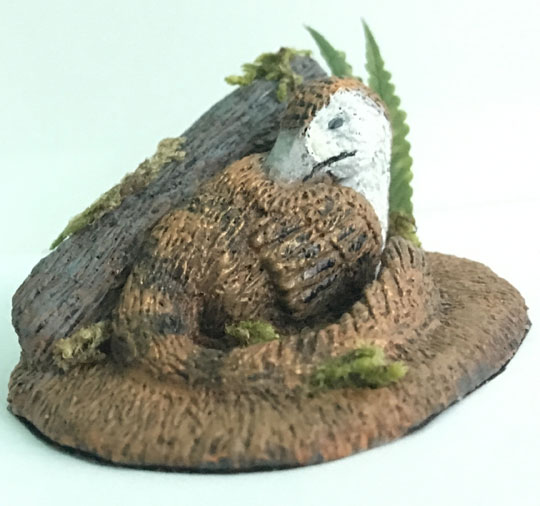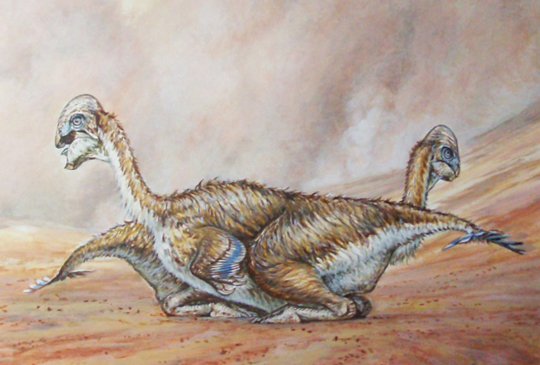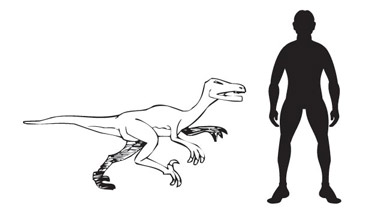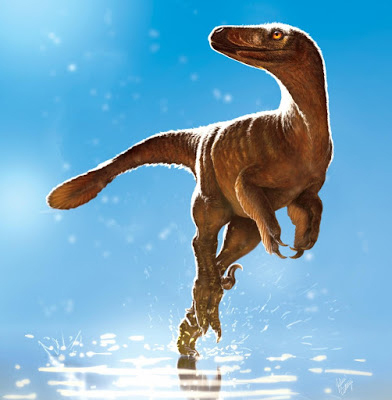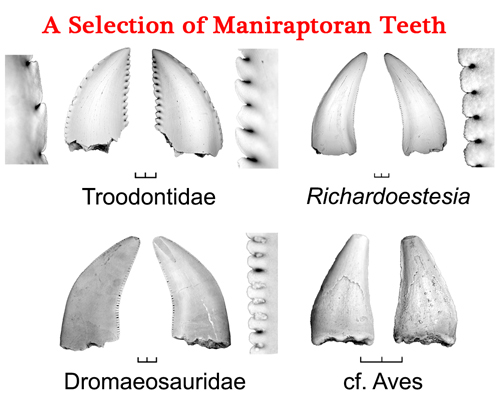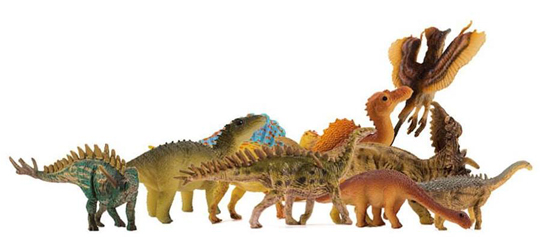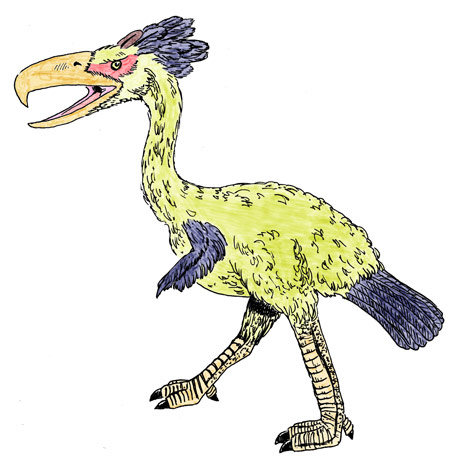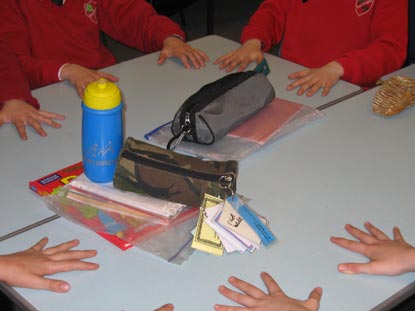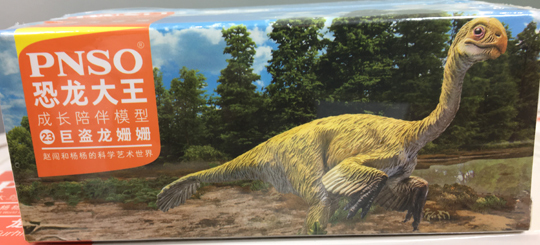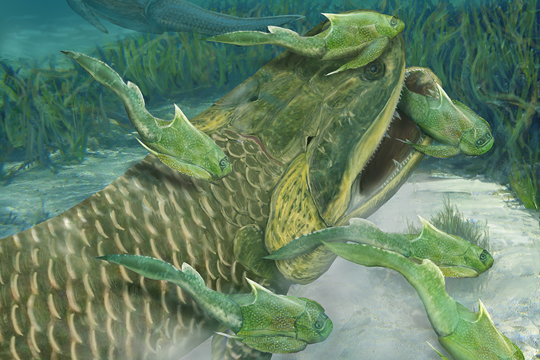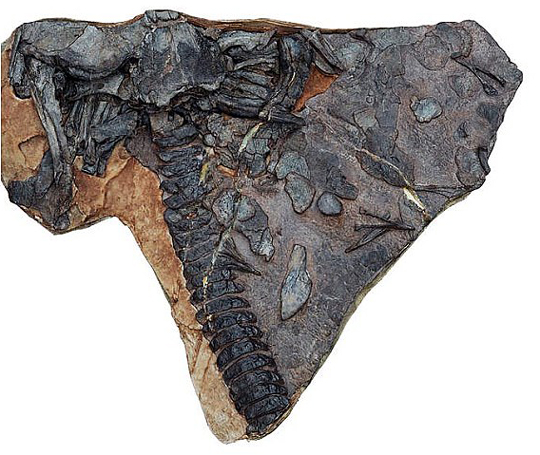A Review of the PNSO Age of Dinosaurs Triceratops Model
PNSO Age of Dinosaurs Triceratops Model Reviewed
Everything Dinosaur has recently added the PNSO range of prehistoric animals and the PNSO “Family Zoo” replicas to its already extensive range of figures. This series is not that well-known outside of China, but these models are rapidly gaining favour with serious collectors. Take for example, the PNSO Age of Dinosaurs Triceratops figure, one of the large dinosaur models within this particular range.
PNSO Age of Dinosaurs Triceratops
The PNSO Age of Dinosaurs Triceratops Model
Picture credit: Everything Dinosaur
The picture above shows this excellent horned dinosaur replica. We have placed the model on its box and put a geology ruler next to it so that readers can easily see the size of this figure. It measures thirty-seven centimetres from the tip of the brow horn to the end of the tail, making this one of the largest models of “three-horned face” available from a mainstream manufacturer. The box artwork is superb and the information leaflet found inside the box, folds out to create a poster of the front cover Triceratops artwork.
A View of the Other Side of the PNSO Age of Dinosaur Triceratops Replica
Picture credit: Everything Dinosaur
Triceratops Model Scale
Although, PNSO does not publish a scale for their models, our dinosaur experts have estimated that this Triceratops (T. horridus) is in approximately in 1:24 scale. It makes a spectacular display piece and there is a lot of detail to admire on the replica, most notably the intriguing skin texture, the folds of skin that indicate movement and that wonderfully painted skull and neck frill.
A Close View of the Head of the PNSO Age of Dinosaurs Triceratops Model
Picture credit: Everything Dinosaur
To view the PNSO Age of Dinosaurs model series which is available from Everything Dinosaur: PNSO Age of Dinosaurs Model Collection.
Splashes of Colour
The splashes of orange on the head contrast with the greyish body. Palaeontologists tend to agree that colour was very important to dinosaurs and it makes sense for Triceratops to have a bright head and neck frill, this would have helped make the head and the large frill more eye-catching when it came to visual displays to intimidate rivals and to deter attack from predatory tyrannosaurs.
The PNSO Triceratops Replica (Anterior View)
Picture credit: Everything Dinosaur
To view the PNSO model range at Everything Dinosaur: PNSO Age of Dinosaurs Models.
The head is slightly lowered on the PNSO replica, it’s as if the animal is displaying or perhaps it is getting ready to lunge with its dangerous brow horns.
Fantastic Box Artwork (PNSO Age of Dinosaurs Triceratops Figure)
All in all, this is a highly collectable Triceratops figure and we look forward to seeing how this model series develops.
PNSO have also introduced a range of extant animal models under the umbrella brand of “Family Zoo”. At the moment, three large models of living animals are included within this series. There is a Hippopotamus, an African Elephant and a gorgeous White Rhinoceros model. So, if ancient horned animals are not quite your thing, then why not grab a replica of the highly endangered African White Rhinoceros, a living example of a horned giant, a magnificent creature, that sadly, like the Triceratops some sixty-six million years beforehand, is now facing extinction.
The Beautiful PNSO Family Zoo White Rhinoceros Model
Picture credit: Everything Dinosaur
To view the Everything Dinosaur website: Everything Dinosaur.


